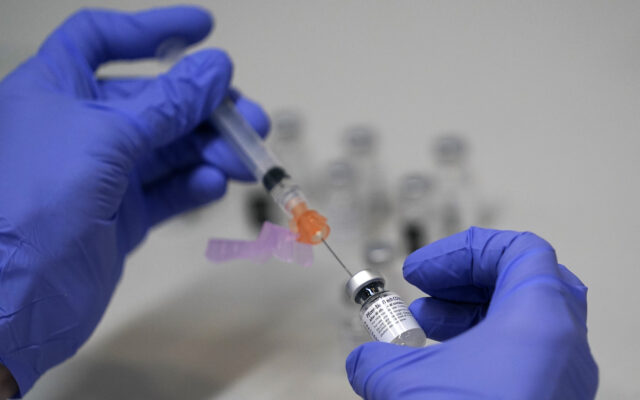
3 experts say what the COVID-19 pandemic will look like in Maine in 2022
By Caitlin Andrews, Bangor Daily News Staff
After a roller coaster year, the COVID-19 pandemic is still taking a massive toll on Maine and the path it will take from here is uncertain.
The first half of this year was marked by hope from the emerging COVID-19 vaccines. High cases last winter slowed to a relative crawl by the summer, when Maine wound down the last remaining business restrictions. The more contagious delta variant then dominated cases, fueling a surge that has persisted since the late summer. Maine is entering the new year with near record case and hospitalization levels as the new omicron variant takes hold.
The Bangor Daily News talked to three experts to get a sense of what next year may bring. While they expressed hope about vaccines that could further dampen the virus’ spread, they saw continued risk among unvaccinated people that could stress the state’s response.
Here is what Mainers can expect from the pandemic next year.
Early acceptance of vaccines protected Maine from early surges and treatments for the virus will augment them in 2022.
As the virus grew more contagious, Maine saw an increasing amount of breakthrough cases in vaccinated people over the course of 2021. Omicron is likely to lead to far more, though the emerging consensus is that cases being caused by the new variant are more mild. The vaccines are still widely successful at preventing serious illness and deaths.
That is why each health expert who spoke with the BDN agreed they were game changers for the course of the pandemic and will continue to be so going forward. The advent of more drugs that can treat severe COVID-19 symptoms is another bright spot.
The importance of vaccines was driven home when the delta variant became prominent in Maine, pushing cases up and largely unvaccinated people into hospitals, said Charles Pattavina, an emergency room doctor at St. Joseph’s Hospital in Bangor. The effect from vaccination is evident in the differences between case rates in Cumberland County — Maine’s most vaccinated ones — and its more rural regions.
The arrival of omicron could make things worse, Pattavina worried, with the effects likely to be felt by January. While cases generally appear to be mild, the transmissibility of omicron could increase cases so much that hospitals become overwhelmed with COVID-19 cases, he said.
Pressure will be more on the private sector as Maine eschews mandates.
State officials are not interested in bringing back restrictions that marked the first year and a half of the pandemic, such as masking requirements, indoor business capacity limits and others. They have said that the best way to end the pandemic is through encouraging vaccinations.
Mills pushed that message hardest through her controversial mandate for health care employees, though she has not said much about a wider private-sector requirement from President Joe Biden for employers with over 100 employees that will take effect for now after ping-ponging through the courts.
Any further increase in cases could spark debate in health circles about whether the state should do more as communities including Boston, Washington, D.C., and New York City put in place pandemic mitigation efforts. Last week, the Maine Medical Association put the onus on businesses, recommending they require masks indoors for both customers and employees.
The association had discussed whether to push Mills to reinstate a mask requirement, said Dr. Lani Graham, who sits on the association’s public health committee and is a former director of Maine’s public health agency. While there were concerns about whether the backlash against such a provision would do more harm than good, there are still splits on that issue.
“When you look at other public health interventions, it is only when we are quite aggressive with requirements that we are successful,” she said.
As the pandemic’s path remains uncertain, hospitals have become the canary in the coal mine.
The regular record-setting case numbers reported by the Maine CDC are dispiriting, but they are quickly becoming a less-useful metric as the surge continues due to sustained community spread in all 16 counties, lagging testing and the state’s struggle to process all the tests they are getting in a timely manner.
Hospitalizations will increasingly become a better indicator of whether people are experiencing more drastic cases. Graham said while much about omicron is uncertain, it will quickly be apparent in how many people need a high level of care, regardless of their vaccination status.
“We are now coming into a time when people who are vaccinated with boosters may not be protected,” she said.
Hospitals have been near capacity in recent weeks before COVID-19 inpatients dipped around Christmas, but any sustained stress on hospitals will continue to reverberate through the rest of a health care system that is suffering from a worker shortage at all levels. Continued serious case levels will continue to make it hard to find solutions.
“Hospitals never had that volume of capacity, and you can’t just ramp it up suddenly,” said Patty Hamilton, Bangor’s public health director.